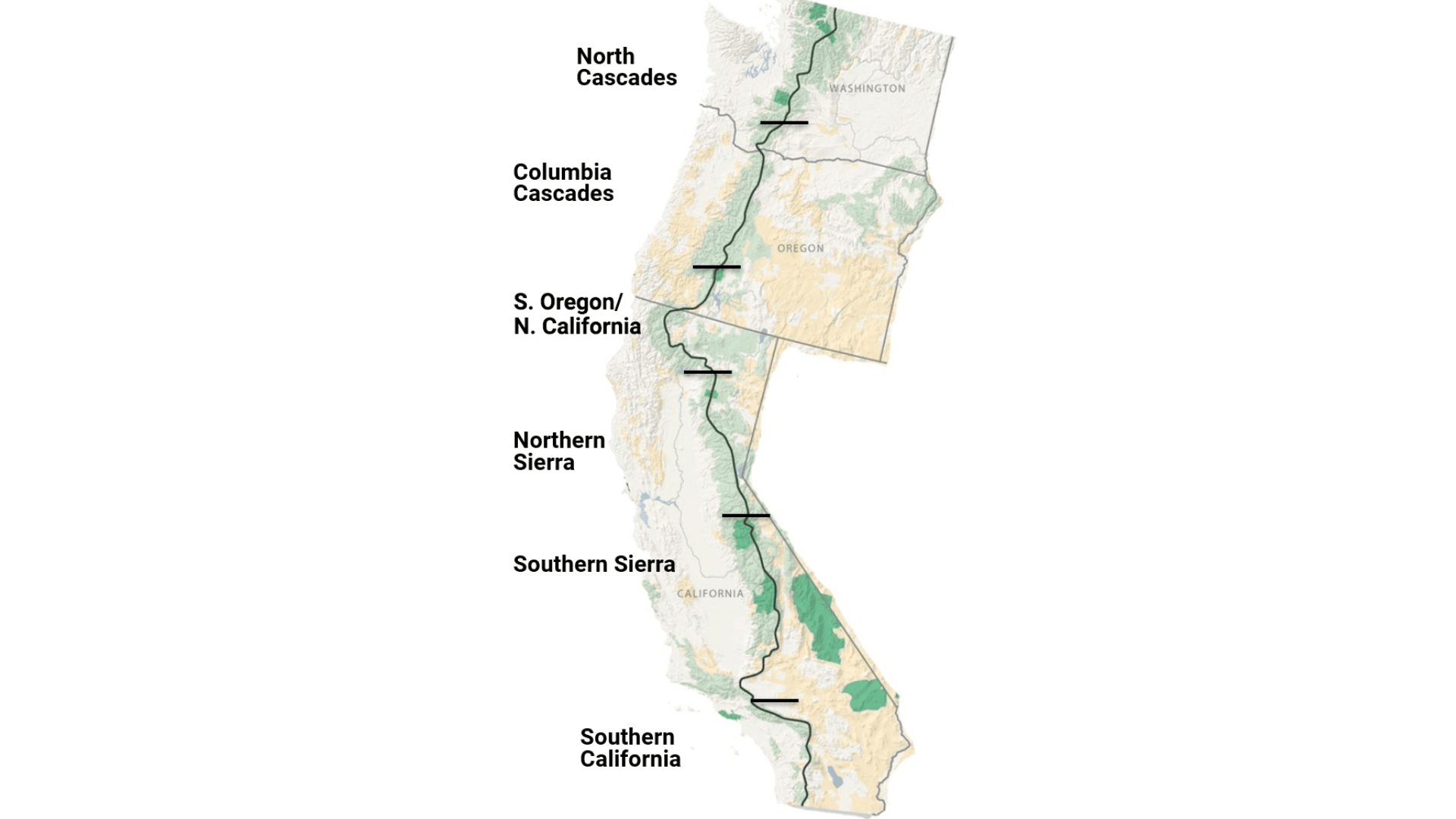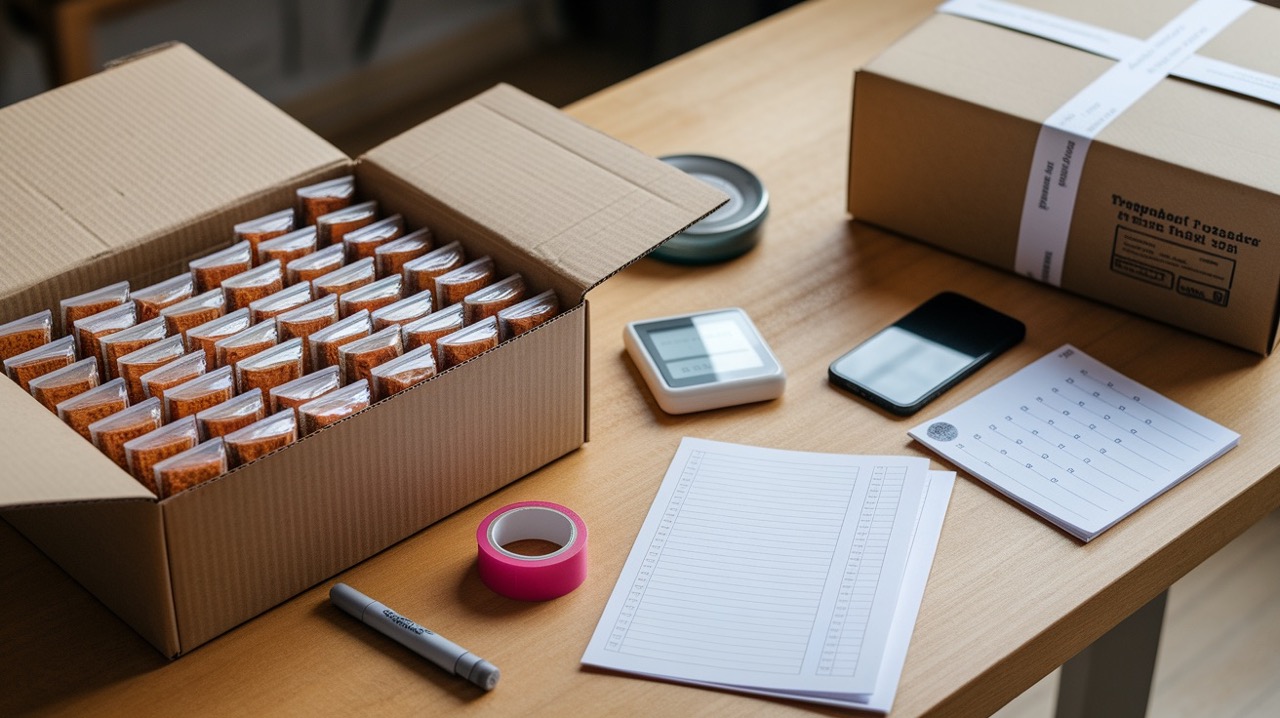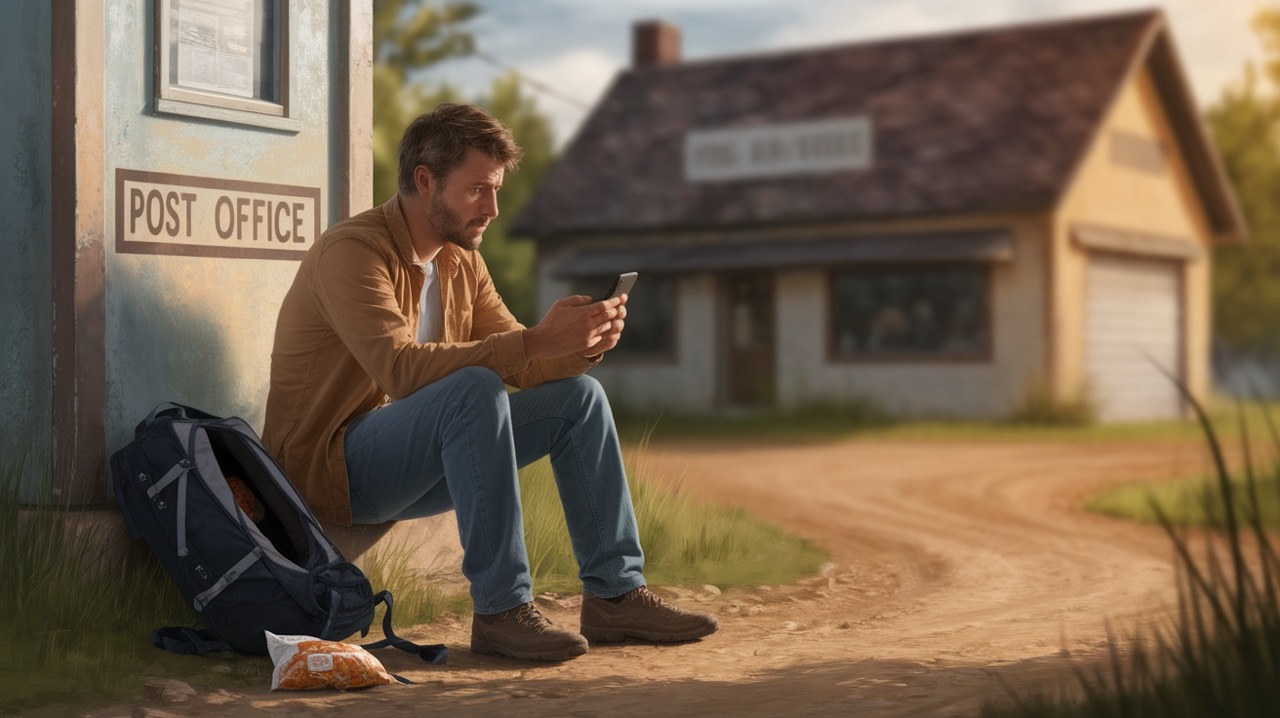The Pacific Crest Path (PCT) spans 2,650 miles (4,265 kilometers) from Mexico to Canada by California, Oregon, and Washington.
This long-distance mountaineering path takes most walkers 4-6 months to complete.
One of many largest planning duties for PCT hikers is establishing a very good resupply system.
Hikers can’t carry meals for the entire path directly.
Most have to get extra meals each 3-7 days.
This information will discover the alternative ways to resupply well whereas going by the Pacific Crest Path.
By the top, you should have the know-how wanted to plan your PCT meals technique, even if you’re a first-timer or an previous professional seeking to make your subsequent hike higher.
Why PCT Resupply Planning Issues?
The Pacific Crest Path (PCT) crosses Southern California’s sizzling deserts, the excessive Sierra Nevada mountains, and the forests of Oregon and Washington.
Hikers cope with excessive warmth, rocky paths, and snowy mountain passes.
They have to be sturdy, capable of find, and at all times prepared for sudden climate modifications.
Resupply factors, that are present in cities or shops like Kennedy Meadows and Mammoth Lakes, are spaced about 30 to 100 miles (48 to 161 km) aside.
These are some stops the place hikers can get extra meals and kit, whereas there generally is a lengthy distance between every cease.
Some spots supply simply the fundamentals, whereas others have every little thing a hiker may want.
In distant areas just like the Excessive Sierra, hikers could carry as much as 10 days of meals.
As a result of some areas are restricted or laborious to succeed in, many hikers plan their resupply stops rigorously.
Tips on how to Plan Your PCT Resupply Schedule?

Planning your resupply schedule on the Pacific Crest Path (PCT) is vital to staying well-fed and energized all through your hike.
Listed here are three frequent methods to handle your meals and provides effectively.
1. Purchase as You Go
You should buy meals and provides at cities alongside the path, the place supermarkets and shops are extra frequent now.
This technique allows you to carry much less weight and alter your wants as you go.
2. Ship Resupply Packing containers
Mail packages with meals and kit to submit places of work or particular places on the path.
This helps when cities have restricted or costly choices, making certain you’ve gotten what you want.
3. Mix Each Methods
Combine shopping for regionally with sending bins for distant sections or particular objects.
This versatile strategy balances comfort and preparedness in your hike.
Steps to Plan Earlier than Making ready for Resupply
Earlier than resupply, know how you can attain cities. You may hitchhike, experience a shuttle, or get a pickup from a hiker-friendly hostel.
Use useful path apps like FarOut (Guthook), Gaia GPS, or PCT Planner.
These apps present cities, miles, and the place to resupply.
Verify if shops are open and the way far they’re from the path. Good planning retains you from working out of meals or strolling too far with out understanding the place to go subsequent.
The place to Resupply on The PCT: Regional Breakdown


Understanding the place to resupply is vital to planning a profitable PCT hike.
The path passes close to many cities and repair factors the place hikers can restock.
1. Southern California Area
These resupply factors assist hikers by the new, dry desert part firstly of the PCT.
- Mount Laguna (Mile 42): Small retailer with fundamentals however dear.
- Idyllwild (Mile 179): Full grocery retailer, gear store, and submit workplace.
- Huge Bear Metropolis (Mile 266): Giant supermarkets and all providers.
- Wrightwood (Mile 369): Good grocery retailer and hiker-friendly city.
- Agua Dulce/Acton (Mile 454): Grocery retailer in Agua Dulce.
2. Sierra Nevada Area
These stops help hikers by the best and most difficult terrain on the PCT.
- Kennedy Meadows (Mile 702): Well-known cease earlier than the Sierra, however has restricted provides.
- Independence/Bishop (Mile 789): Attain from Kearsarge Move.
Bishop has all of the providers. - Mammoth Lakes (Mile 907): Full providers, giant shops.
- South Lake Tahoe (Mile 1092): All providers and huge shops.
3. Northern California Area
These resupply factors assist hikers by the forested mountains of Northern California.
- Sierra Metropolis (Mile 1198): Small retailer with fundamentals.
- Belden (Mile 1289): Very small resupply at resort.
- Chester (Mile 1333): Good-sized grocery retailer.
- Mount Shasta (Mile 1501): Full grocery store and providers.
4. Oregon Area
These stops provide hikers by Oregon’s volcanic landscapes and forests.
- Ashland (Mile 1727): Giant shops and full providers.
- Crater Lake (Mile 1830): Small retailer at Mazama Village.
- Bend/Sisters (Mile 2000): Full providers, reached by hitchhike.
- Cascade Locks (Mile 2155): Small grocery and bridge to Washington.
5. Washington Area
These last resupply factors help hikers by Washington’s difficult mountain terrain.
- Trout Lake (Mile 2234): Small retailer with fundamentals.
- White Move (Mile 2303): Small retailer with hiker fundamentals.
- Snoqualmie Move (Mile 2402): Small grocery at gasoline station.
- Stehekin (Mile 2580): Restricted retailer, well-known bakery, final cease earlier than Canada.
Most hikers use 25-30 resupply stops throughout a whole thru-hike, averaging one cease each 4-5 days, relying on mountaineering velocity and private wants.
Tips on how to Mail Resupply Packing containers for the PCT?


Planning to hike the Pacific Crest Path? Resupply bins show you how to keep prepared, fueled, and centered.
Right here’s a fast information to maintain issues clean in your enterprise.
Know When & The place to Ship
Some cities don’t have many shops—plan forward.
Ship bins 2–3 weeks early for distant locations; 1–2 weeks is okay for greater cities.
Pack Sensible & Gentle
Maintain bins below 20 kilos to make carrying simpler.
Medium USPS flat-rate bins match 4–7 days of meals excellent.
Gas Your Hike Proper
Goal for 3,500–5,000 energy a day to maintain your vitality up.
Add particular meals or gear you’ll want for the following path part.
Label & Observe All the pieces
Write your title, “Maintain for PCT Hiker,” and ETA on every field.
Use shiny tape and save monitoring numbers simply in case.
Choose-Up Ideas & Additional Charges
At all times carry your ID and test the submit workplace hours.
Some locations could cost $5–$15 to carry your field—test earlier than you ship.
NOTE: At all times embrace a backup plan for resupply factors – climate delays or closures can occur unexpectedly. Double-check pickup hours and speak to info earlier than you hit the path.
Budgeting Your PCT Resupply Prices


Understanding the meals prices for a Pacific Crest Path (PCT) hike is essential for efficient budgeting and planning.
| CATEGORY | DETAILS |
|---|---|
| Every day Path Meals Value | $10-15 per day, totaling $1,500-2,250 for a 5-month hike (path meals solely). |
| City Meals Bills | Extra prices for meals in cities are usually not included within the path meals funds. |
| Value Variation by Location | Small path city shops cost 30-40% greater than bigger metropolis shops. |
| Mailing Field Prices | Transport a medium USPS flat-rate field prices $16-20 per field. |
| Field Holding Charges | Some resupply factors cost $5-15 to carry mailed bins. |
| Whole Resupply Price range | Ranges from $2,000 to $3,500 for meals, relying on selections and methods. |
Tricks to Save Cash on PCT Resupply
These methods may help stretch your meals funds all through your hike:
-
Sensible Buying Technique: Purchase meals in bulk at giant shops like Walmart or Costco, then use a mail-forward strategy by buying 2-4 weeks price of provides directly and delivery bins to approaching resupply factors.
-
DIY Meals Preparation: Dehydrate your individual meals as an alternative of buying costly freeze-dried choices, and give attention to high-calorie meals with the very best cost-per-calorie ratio like peanut butter, oats, and pasta.
-
Maximize Free Assets: Reap the benefits of hiker bins at hostels and path stops without spending a dime donated objects, and think about group shopping for with mountaineering companions to separate bulk buy prices.
-
Management City Bills: Restrict restaurant meals since one meal can price as a lot as 2-3 days of path meals, and stick with purchasing lists to keep away from impulse purchases if you’re hungry after lengthy path sections.
-
Proper-Measurement Your Provides: Keep away from overpacking meals (most hikers carry an excessive amount of initially), and if funds run low, think about choosing up odd jobs in path cities to complement your funds.
With cautious planning and good purchasing, you’ll be able to preserve good diet whereas holding your resupply prices manageable all through your PCT trek.
What to Do When Resupply Plans Fail?


Even the very best plans can disintegrate on the Pacific Crest Path, so you will need to keep calm and assume clearly.
If a bundle is misplaced, contact the mail service utilizing your monitoring quantity for assist or redirection to the following cease.
Submit places of work can typically ahead bins, whereas close by gasoline stations or campgrounds could have fundamental meals when shops are closed.
Verify hiker bins at hostels for leftover meals and ask path angels or locals for assist with rides or provides.
The mountaineering neighborhood is supportive, so construct friendships and share helpful info when doable.
At all times carry additional meals for one or two days and ration in distant areas if wanted.
Maintain an inventory of resupply cities, contact particulars, and carry emergency money in case you could attain greater cities.
Frequent Errors to Keep away from


Many PCT hikers run into the identical resupply issues that may be simply prevented with higher planning.
- Not checking path updates: Fires, snow, or path modifications can block your deliberate resupply cease, leaving you stranded with out meals.
- Poor meals planning: Packing too little selection results in meals fatigue, whereas skipping meals to avoid wasting weight will go away you weak and gradual on the path.
- Over-relying on know-how: GPS units and apps can fail when batteries die – at all times carry paper maps and backup money since some cities don’t settle for playing cards.
- Skipping observe runs: Take a look at your packing system at residence to see what suits and what doesn’t, moderately than figuring it out on the path.
- Being too inflexible with plans: The path modifications consistently, so your resupply technique wants flexibility to adapt to new circumstances and your physique’s altering wants.
Being conscious of those frequent pitfalls helps create a resupply technique that helps moderately than complicates your hike.
Wrapping It Up
Planning your PCT resupply is vital to a very good hike, however it doesn’t must be laborious.
By mixing retailer resupply with some mail drops, you’ll have meals when wanted with out an excessive amount of stress.
Most hikers discover that straightforward plans work finest: resupply each 4-5 days, ship bins solely to spots with poor choices, and adapt as you go.
Do not forget that your meals wants and tastes will change on the path. What appears scrumptious at residence won’t work after weeks of mountaineering.
With the correct mix of planning and suppleness, your PCT resupply technique will help your hike with out taking up your journey.